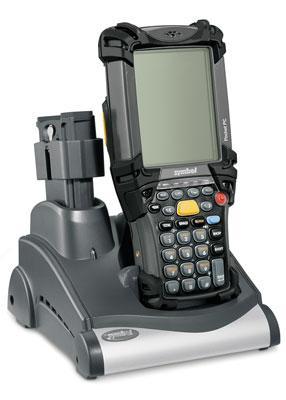 All stock handlings can also be carried out through optical reader in R/F
All stock handlings can also be carried out through optical reader in R/F
- Query on differences in stock G (general)
- Query on differences in stock F (finished products)
- Fiche Query
- Trasfer from Stock G to Stock W
- Lease Set up of Fiche in stock G
- Trasfer from Stock F to stock U (for clients)
- Transfer from Stock F to stock U (for suppliers)
- Stock list for Fiche of Stock G
- Stock list for Fiche of Stock F
Warehouses and shipments
This unit deals with storing and handling of raw material, of components, semi-manufactured products and finished products, by guaranteeing both their availability and conservation on one hand, and on the other hand the updating of corresponding accounting situation. The main characteristics are :
- multi-warehouse management
- balance management for supplier or costumer
- management of both dynamic and static location and FIFO management of balances in the different locations;
- use of barcode to carry out movements even in radiofrequency;
- exploitation of both LIFO and FIFO warehouse;
- Traceability of products
- Shipments management
To control the stage of shipment to clients, SIMAG involves different typologies of shipment according to both blanket and lot orders, for orders concerning Italy or foreign countries to clients or connected companies, with the possibility to plan the same through different methods in order to guarantee a prompt supply of packaging zones. In case of forwarding to clients in JIT or KAN BAN a specific procedure (supported by optic tools of label reading) has been set up to schedule “Shuttles” to send and link together the client with the right shuttle, by guiding the operator in both material picking up and matching to Shuttle.
Unencoded Material
Si5 enables to manage unencoded material, both in case of purchase orders and stock, with the aim of reduce at minimum the necessity of paper documentation. Through this unit, shipments and reception of materials and services are possible. Following transactions and in particular book-in ones don’t affect stock balance, but are connected to supplier orders in order to update their status and provide with the visibility of made deliveries.
Multi-warehouses
Si5 enables to manage at the same time the same item in several warehouses. Each of these warehouses keeps and manage different types of materials, in different conditions, belonging to different owners and with different typologies of storage and movement. It’s the case of sucontract work warehouses ( both receivable and payable). In receivable subcontract warehouses material of a third-party is kept and sent in receivable subcontract work. In payable subcontract warehouses at the supplier’s our material sent in subcontract work at a third-party’s is moved. Both these warehouse are managed by the owner ( client or supplier).
Two exemples of warehouses depending on the material condition are finished warehouses and scrap storages. Finished warehouses keep finished products before being sent to the client, they’re materials which have passed the quality control. Scrap storages keep materials which haven’t passed controls and are isolated not to infect good wares.
Management can also need specific warehouses. Expiring materials and perishable/infiammable materials need to be isolated in warehouse which present appropriate lay out characteristics.
kanban
It’s a procedure of pick-up which aims to optimize material undergoing manufacturing by guaranteeing the appropriate line supply. It bases its functioning on the possibility to have at disposal material containers with a specific quantity of the product and furnished with KANBAN. When the container empties the kanban is sent to the warehouse to exchange it with a full container. We could also call it ” empty VS full”. The great innovation of Si5 is that physical movements of kanbans are replaced with communications within the system.
It’s similar to reorder point because the number of issued kanbans and as a consequence the volume of materials undergoing manufacturing is strictly connected to consumption and time of replenishment from the warehouse.
Radiofrequency
It’s based on the use of tools to acquire information about reading barcodes which represent data to analyse. Its peculiar characteristic is to connected “on line” with the system and is able to do other than real-time data update also to control their validity and congruence.
It’s particularly used to manage warehouses to make handlings easier and it’s mostly efficient when the material is handled per packaging unit.
It’s also used in gathering data from field to acquire information from the beginning of the transactions to suspension or closure.
Locations
Managing locations is one of warehouse features and includes both fixed and free locations. Fixed locations are associated with a specific item and are set aside to it even though the balanced within it is 0.
Free location is associated instead with a specific item just until there’s a balance for it. Free locations enable to optimize spaces in warehouses and give the possibility to associate more items to a single location.
It’s also possible to choose for each item a specific location, according to its both morphological and management characteristics, in which the system suggests when entering or put into production.
Vendor Banking
Si5 manages Vendor Banking and delivery depot, which means a supplier warehouse with us from which material is collected in case of necessity. Warehouse stock of this material is registered for shipping note. At the collection, the entry of material in the company is trasmitted to the supplier of both the collected material and the original receiving note by which material has been collected. Then, the supplier invoices.



